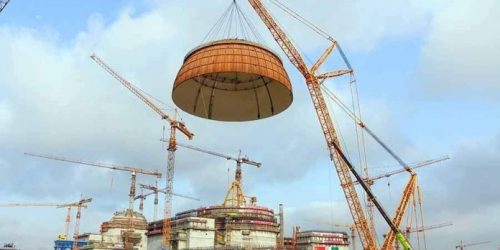China National Nuclear Corporation (CNNC) said that the K2 unit at the Karachi Nuclear Power Plant in Pakistan has successfully completed Hot Functional Tests (HFT). The power plant is the first overseas unit using China’s homegrown Hualong One technology.
The tests have laid a solid foundation for subsequent major processes, including nuclear fuel loading and grid-connected power generation, China Global Television Network (CGTN) reported on Sunday quoting a CNNC official.
HFT plays a significant role in the construction of the nuclear power project, simulating the actual operating conditions of the nuclear power plant. This is done to verify the reliability of the main equipment and systems under the thermal conditions before the nuclear reactor is loaded with nuclear fuel.
These testings are necessary and are a significant hurdle to be crossed in order to achieve nuclear power capabilities.
It is also a comprehensive inspection of the quality of the reactor coolant system equipment, pipeline sealing and welding, as well as the design, manufacture, and installation of relevant systems. Other tests regarding the performance of the power station are also conducted.
Hualong One technology, also known as HPR1000, is one of the third-generation nuclear power designs with the highest acceptability in the current nuclear power market, and a significant landmark achievement of China’s innovative development of nuclear power.
The Hualong One double-layer containment shell can withstand the impact of large aircraft, according to China National Nuclear Corporation (CNNC).
The outer dome is “currently the largest shell structure of nuclear power plants under construction in the world”, the company said. It has the characteristics of a large structural span, dense steel bars and high-strength concrete.
Nuclear power is a clean source of energy; producing much less population than other conventional modes of creating energy. More projects like this would mean that Pakistan would have to rely less on environmentally hazardous energy sources.
General Nuclear’s Fangchenggang plant in the Guangxi Autonomous Region. Those units are also expected to start up in 2022.
Two HPR1000 units are under construction at Pakistan’s Karachi nuclear power plant. Construction began on Karachi unit 2 in 2015 and unit 3 in 2016; the units are planned to enter commercial operation in 2021 and 2022. The HPR1000 has also been proposed for construction at Bradwell in the UK, where it is undergoing Generic Design Assessment.






